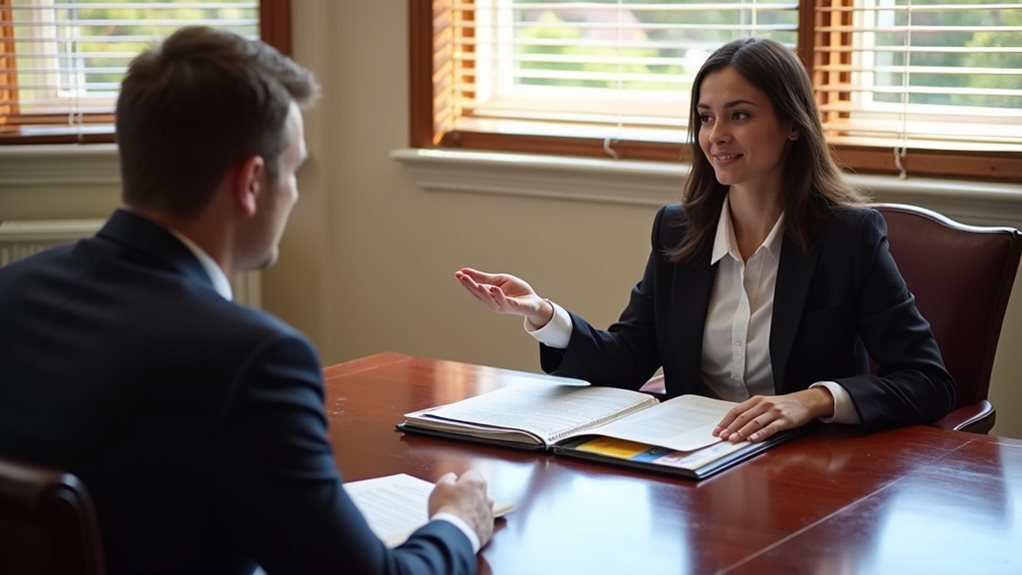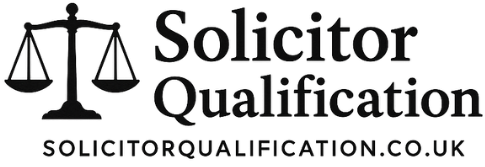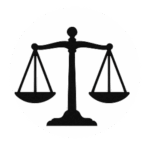To excel at client communication, you’ll need to master several core skills. Start by setting clear expectations about response times, services, and timelines upfront. Transform complex legal concepts into plain language while maintaining professional boundaries. Practice active listening, document all interactions thoroughly, and leverage secure technology for updates. When delivering difficult news, lead with empathy and cultural sensitivity. These foundational elements will strengthen your ability to build lasting client relationships.
Setting Clear Expectations From Day One

When you first meet with clients, establishing clear expectations sets the foundation for a successful attorney-client relationship.
You’ll need to outline specific client roles, communication protocols, and timelines right from the start. Define how often you’ll provide updates, preferred contact methods, and response times for different types of inquiries.
Effective expectation management involves explaining your scope of services, potential outcomes, and any limitations clearly.
Break down complex legal concepts into digestible information, and address potential challenges that might arise during representation.
You should document these discussions in writing, whether through formal engagement letters or detailed meeting summaries. This practice not only protects both parties but also demonstrates your commitment to transparency and professionalism.
Remember to revisit and adjust these expectations as the case evolves.
Mastering the Art of Plain Language Communication
You’ll need to transform dense legal terminology into everyday language that your clients can easily understand.
Breaking down complex concepts starts with replacing “legalese” like heretofore and whereas with simple, modern alternatives that don’t sacrifice accuracy.
When explaining legal matters to clients, you should focus on clear, concrete examples and straightforward explanations that help them grasp key points without feeling overwhelmed by unnecessary jargon.
Break Down Legal Jargon
Legal jargon can create an invisible barrier between you and your clients, making even straightforward concepts feel overwhelming and confusing.
When you’re explaining complex legal matters, it’s essential to break down technical terms into digestible explanations that your clients can easily grasp.
Start by developing a habit of providing clear jargon definitions immediately after using any legal terminology. For instance, instead of saying “we’ll file for summary judgment,” say “we’ll file for summary judgment, which means asking the court to decide the case without a trial because the facts aren’t disputed.”
The importance of clarity can’t be overstated – your client’s trust and confidence often depend on their understanding of the process.
Replace Complex With Simple
Beyond breaking down legal jargon, mastering plain language communication requires a complete shift in how we express complex ideas.
When you’re simplifying concepts for clients, focus on transforming intricate legal principles into clear, digestible information that resonates with their everyday experiences.
Instead of explaining constructive possession through technical terms, try using analogies like having the keys to a car—you control it even if you’re not physically in it.
You’ll find that clients grasp complex legal concepts more readily when you connect them to familiar situations.
Remember that effective communication isn’t about dumbing down the content; it’s about making it accessible while maintaining its essential meaning.
Your goal is to bridge the gap between legal expertise and practical understanding without sacrificing accuracy.
Focus On Clear Explanations
While mastering legal terminology is essential, the true art of client communication lies in delivering clear, well-structured explanations. Your ability to break down complex legal concepts into digestible information demonstrates client empathy and professional competence.
To enhance your explanations and guarantee better client understanding:
- Structure your information logically, starting with the main points before diving into specifics.
- Incorporate visual aids like diagrams or flowcharts when explaining procedural matters or complex relationships.
- Check for understanding by asking your client to summarize key points in their own words.
Remember that your goal isn’t to showcase your legal expertise but to help your client fully grasp their situation.
When you deliver clear explanations, you’re building trust and fostering a productive attorney-client relationship that leads to better outcomes.
Establishing Professional Boundaries and Response Times
As a legal trainee, you’ll need to establish clear boundaries around your availability by setting specific contact hours and communicating them upfront to clients.
You can demonstrate your professionalism by creating a structured communication policy that outlines when clients can expect to reach you directly, whether during standard business hours or designated consultation times.
While urgent matters may sometimes require flexibility, setting realistic response time expectations – typically 24-48 hours for routine inquiries – will help you maintain work-life balance while providing reliable client service.
Setting Clear Contact Hours
Legal professionals must establish clear boundaries around their availability to maintain both work-life balance and client satisfaction.
You’ll need to communicate your contact hours effectively to set proper expectations for communication consistency and maintain your professional boundaries.
- Define your core working hours explicitly (e.g., 9 AM to 5 PM) and share these with clients during your initial consultation, ensuring they understand when you’re available for direct communication.
- Create an automated email response that confirms receipt of after-hours messages and indicates when clients can expect your reply.
- Implement a policy for handling urgent matters outside regular contact availability, including specific criteria for what constitutes an emergency and alternative contact procedures.
These boundaries protect your time while ensuring reliable client service.
Managing Response Time Expectations
Managing response time expectations effectively forms the foundation of a strong attorney-client relationship.
You’ll need to establish clear guidelines about your typical response time while remaining flexible for urgent matters. Set realistic expectations by communicating your standard turnaround time for emails, calls, and messages – whether that’s within 24 hours or by the next business day.
When you’re handling time-sensitive cases, inform clients about specific scenarios that warrant immediate attention and those that don’t.
Consider implementing an automated response system for after-hours messages, clearly stating when clients can expect to hear from you.
Remember to adjust client expectations based on your current workload and court deadlines. If you anticipate delays in response time, proactively communicate this to maintain trust and demonstrate professional responsibility.
Active Listening Techniques for Client Meetings
When meeting with clients, mastering active listening techniques can make the difference between a successful attorney-client relationship and a disappointing one.
You’ll need to develop your emotional intelligence and pay attention to nonverbal cues to truly understand your client’s concerns.
- Maintain eye contact and lean slightly forward to show engagement, while nodding occasionally to demonstrate you’re following their narrative.
- Take concise notes without breaking your attention, and repeat key points back to your client using their own words to confirm understanding.
- Watch for subtle physical signals that might indicate discomfort or hesitation, as these often reveal underlying issues your client hasn’t verbally expressed yet.
Master these techniques, and you’ll build stronger connections while gathering more accurate information for your cases.
Managing Difficult Conversations and Delivering Bad News

As practitioners in a demanding profession, you’ll inevitably face the challenging task of delivering unfavorable news to clients. Success in these moments requires both emotional intelligence and refined conflict resolution skills.
When sharing difficult information, choose a private setting and maintain direct eye contact while speaking with empathy and clarity. Frame the conversation by acknowledging the client’s perspective and emotions before presenting the facts.
You’ll want to explain the situation thoroughly, outline available options, and provide clear next steps. Remember to pause frequently, allowing your client to process the information and ask questions.
While you can’t control their reaction, you can manage the delivery of bad news professionally and compassionately. Stay composed, even if your client becomes upset, and document all key discussion points afterward.
Building Trust Through Consistent Documentation
Thorough documentation serves as the backbone of client trust in legal practice. When you maintain detailed records of every client interaction, you’ll strengthen your professional relationships and protect both your clients and your practice.
Proper document retention protocols demonstrate your commitment to client confidentiality and legal excellence.
- Create standardized templates for common communications, ensuring consistency in your documentation while saving valuable time.
- Maintain an extensive digital filing system that tracks all client conversations, including phone calls, emails, and meeting notes.
- Set up automated reminders for critical deadlines and follow-ups, documenting each notification in your client’s file. Furthermore, good documentation facilitates effective client communication, which enhances client satisfaction and trust in your legal services.
Leveraging Technology for Effective Client Updates
Modern technology provides legal trainees with powerful tools to streamline client communications and enhance service delivery.
You’ll find that implementing digital communication strategies through secure client portals can transform your practice, making it more efficient and responsive to client needs.
When you establish a robust digital system, you’re able to share case updates, documents, and important deadlines in real-time.
Client portals offer a centralized platform where you can maintain organized communication threads, schedule appointments, and track document revisions.
This technology not only saves time but also demonstrates your commitment to transparency and accessibility.
Remember to select platforms that prioritize security and compliance with legal standards while remaining user-friendly for both you and your clients.
Regular training sessions guarantee you’re maximizing these tools’ potential.
Cultural Sensitivity and Cross-Cultural Communication

Building cultural competence stands at the forefront of successful client relationships in today’s diverse legal landscape. As a legal trainee, you’ll need to develop cultural awareness and adapt your communication styles to effectively serve clients from various backgrounds.
- Research your client’s cultural norms and business etiquette before meetings, paying attention to specific customs, greetings, and expectations.
- Adapt your communication approach by considering directness vs. indirectness, formality levels, and non-verbal cues that vary across cultures.
- Validate your understanding by asking thoughtful questions and showing genuine interest in your client’s cultural perspective.
Remember that cultural sensitivity isn’t just about avoiding offense – it’s about creating an environment where your clients feel understood and respected.
This awareness will help you build stronger professional relationships and deliver more effective legal services.
Developing a Framework for Client Feedback and Improvement
Successful legal practice hinges on your ability to gather, analyze, and act upon client feedback systematically. You’ll want to establish regular client surveys after key milestones in their legal matters, creating meaningful feedback loops that inform your service delivery.
Consider implementing both formal assessments and informal check-ins to capture thorough insights.
To maximize the value of feedback, develop a structured framework that includes satisfaction metrics, communication preferences, and specific areas for improvement.
You’ll need to track patterns over time, identify recurring concerns, and adjust your approach accordingly.
Don’t forget to close the feedback loop by acknowledging client input and communicating the changes you’ve made in response. This illustrates your commitment to continuous improvement and strengthens client relationships through responsive, client-centered service.
Frequently Asked Questions
How Do I Handle a Client Who Constantly Changes Their Story?
Document each version of your client’s story carefully and discuss story consistency concerns openly. Maintain client trust by explaining how inconsistencies could harm their case. Ask clarifying questions to understand what’s driving the changes.
What Should I Do When Clients Contact Me Outside Business Hours?
Just like a fence protects a garden, you’ll need clear boundaries. Set your after-hours communication policy upfront, and don’t respond outside business hours unless it’s truly urgent – this maintains your work-life balance.
How Can I Maintain Professionalism When Clients Become Emotionally Hostile?
Stay calm and use your emotional intelligence to de-escalate tensions. Validate their feelings while maintaining firm boundaries. Practice conflict resolution by redirecting hostile exchanges into constructive dialogue. Don’t take their reactions personally.
What’s the Best Way to Discuss Sensitive Fee-Related Matters?
With 76% of clients citing billing clarity as essential, you’ll build trust through fee transparency. Address costs upfront, offer detailed breakdowns of services, and discuss payment plans early to prevent awkward conversations later.
Should I Connect With Clients on Social Media Platforms?
You shouldn’t connect with clients on social media to maintain professional social media boundaries. It raises significant privacy concerns and can blur the line between personal and professional relationships. Keep your interactions strictly professional.
Final Thoughts
Your success as a legal trainee hinges on mastering client communication skills that you’ll use throughout your career. Whether you’re crafting clear emails, managing difficult conversations, or building trust through documentation, these fundamental techniques will serve as your foundation. Remember that effective communication isn’t just about speaking and writing – it’s about listening, adapting, and growing as a professional in today’s dynamic legal landscape.


